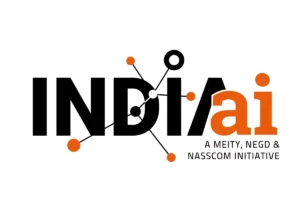
Introduction
Building AI applications requires specialized tools, and that’s where machine learning libraries come in. These libraries are essentially software collections that provide pre-written code for various AI tasks, saving developers countless hours and streamlining the development process. This guide delves into five of the most popular machine learning libraries, highlighting their strengths, weaknesses, and ideal use cases.
Read More: Air Liquide Commits $250 Million Investment to U.S. Semiconductor Industry – techovedas
1. TensorFlow
Initially developed for internal use at Google, TensorFlow has become an open-source darling, renowned for its scalability and robustness. TensorFlow powers a wide range of applications, from image recognition in Google Photos to powering AlphaGo, the AI that defeated the world champion in Go.
Pros:
- Scalable: Can handle massive datasets and complex projects with ease.
- Robust: Google’s constant updates and large developer community ensure its reliability.
- Production-Ready: Ideal for deploying AI models in real-world applications.
Cons:
- Complexity: TensorFlow’s low-level nature can be daunting for beginners.
- Steep Learning Curve: Be prepared to invest time in mastering its intricacies.
Perfect for: Experienced developers tackling large-scale AI projects, especially those requiring deployment in production environments.
2. PyTorch
If you know Python , PyTorch will feel very comfortable . Its Pythonic syntax makes it intuitive and user-friendly. Facebook heavily backs PyTorch, and its popularity is surging. It’s a strong contender in the natural language processing (NLP) domain, powering Facebook’s chatbots and machine translation systems.
Pros:
- Pythonic: Seamless integration with Python code for a smooth development experience.
- Dynamic Computation Graph: Allows for real-time modification of the model during training, offering greater flexibility.
Cons:
- Less Mature Ecosystem: Compared to TensorFlow, PyTorch’s ecosystem of pre-trained models and community support is still evolving.
Perfect for: Python developers new to machine learning or those seeking a flexible framework for research projects.
Read More:6 Prerequisites for Pursuing M.Tech in VLSI: An In-Depth Guide – techovedas
3. Keras
Keras is a high-level API (application programming interface) that sits on top of other libraries like TensorFlow or PyTorch, providing a simpler and more user-friendly interface for building and training models. Many developers use Keras as a stepping stone to learn the fundamentals of machine learning before diving deeper into lower-level libraries like TensorFlow.
Pros:
- Easy to Use: Ideal for beginners or those who want to quickly prototype AI models.
- Fast Experimentation: Keras’s simplicity allows for rapid iteration and exploration of different model architectures.
Cons:
- Limited Flexibility: For complex projects, Keras’s high-level nature might restrict customization.
Perfect for: Beginners getting their feet wet with machine learning or those needing to rapidly prototype and test different AI models.
Read More:6 Prerequisites for Pursuing M.Tech in VLSI: An In-Depth Guide – techovedas
4. Scikit-learn
Scikit-learn is a Swiss Army knife for traditional machine learning tasks like classification, regression, and clustering. It provides a comprehensive set of algorithms and tools, making it an excellent choice for a variety of projects. Despite the rise of deep learning, Scikit-learn remains a valuable tool for many machine learning tasks.
Pros:
- Comprehensive: Offers a wide range of machine learning algorithms for various tasks.
- Beginner-friendly: Scikit-learn’s documentation and tutorials make it easy for newcomers to get started.
Cons:
- Not for Deep Learning: Scikit-learn isn’t designed for deep learning tasks, which rely on artificial neural networks.
Perfect for: Classification, regression, and clustering problems, especially for projects that don’t require deep learning techniques.
Read More: Top 5 Best-Selling Books on Semiconductor Technology 2024 Worldwide – techovedas
5. Theano
Theano might not be the new kid on the block, but its development officially stopped in 2017. However, it deserves a mention for its historical significance and continued usability in specific contexts. It paved the way for other deep learning libraries and its codebase continues to be a valuable resource for researchers and developers.
Pros:
- Tight Integration with NumPy: Theano seamlessly integrates with NumPy, a fundamental library for scientific computing in Python, offering advantages for those already familiar with the ecosystem.
- Speed: Theano has impressive computational speed, making it a good choice for computationally intensive tasks.
Cons:
- Development Stopped: No new features or bug fixes are being implemented, potentially leading to compatibility issues with future versions of Python or other libraries.
- Less User-friendly: Theano’s syntax can be less intuitive compared to newer libraries.
Perfect for: Specific use cases that leverage Theano’s tight NumPy integration and speed, especially for projects already invested in the Theano codebase.
Conclusion
Selecting the perfect machine learning library depends on your specific project requirements and skillset. Here’s a quick cheat sheet to help you navigate:
- For Beginners: Start with Scikit-learn or Keras for their user-friendly interfaces.
- For Scalable Projects: Consider TensorFlow for its robustness and production-ready capabilities.
- For Python Enthusiasts: Explore PyTorch’s intuitive Pythonic syntax and dynamic computation graphs.
- For Research and Experimentation: Leverage Keras’s ease of use for rapid prototyping.
- For Specific Use Cases: Theano might be an option if you need its speed and NumPy integration, but be mindful of its development status.
Remember, the best library is the one that empowers you to bring your AI vision to life. So, experiment, explore, and unleash the power of machine learning!








